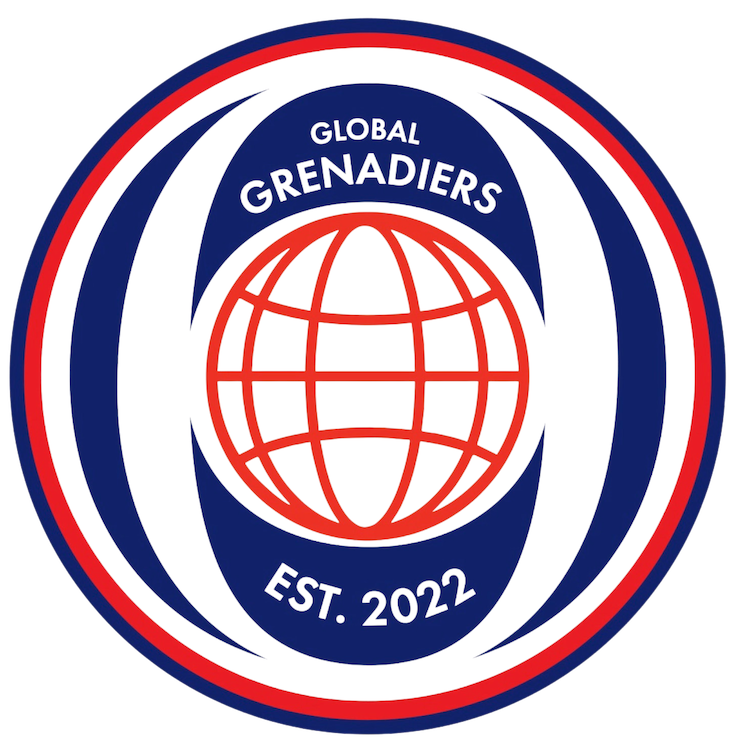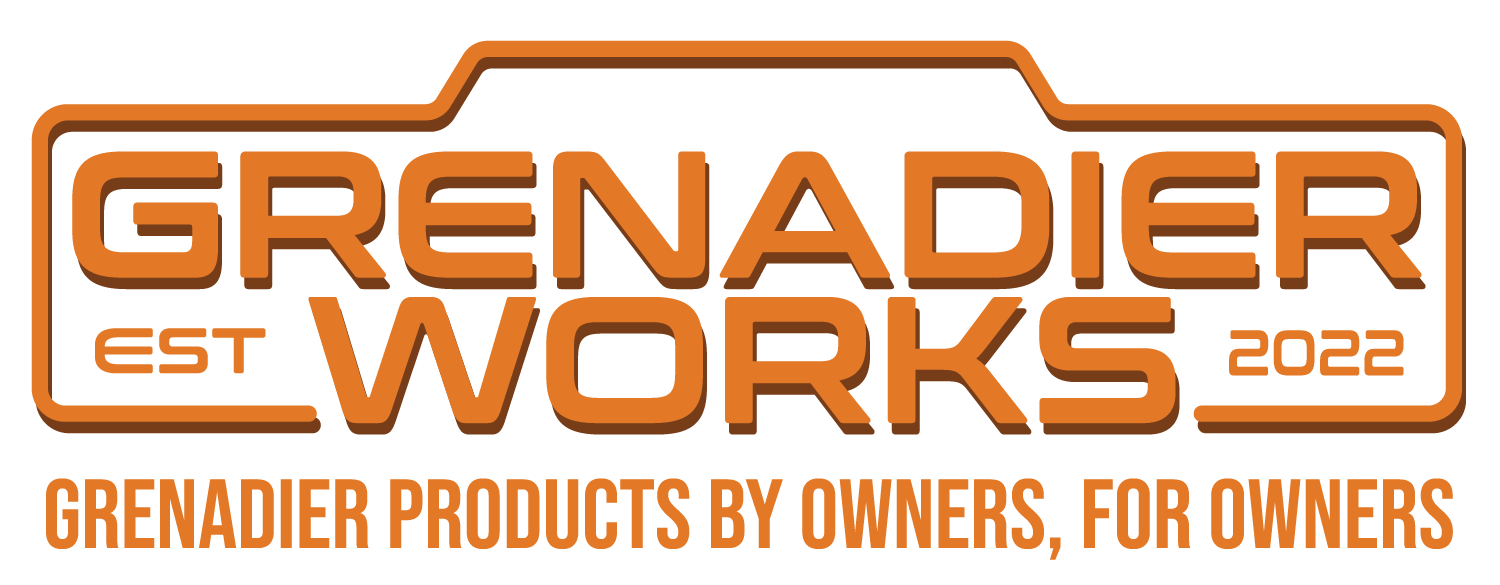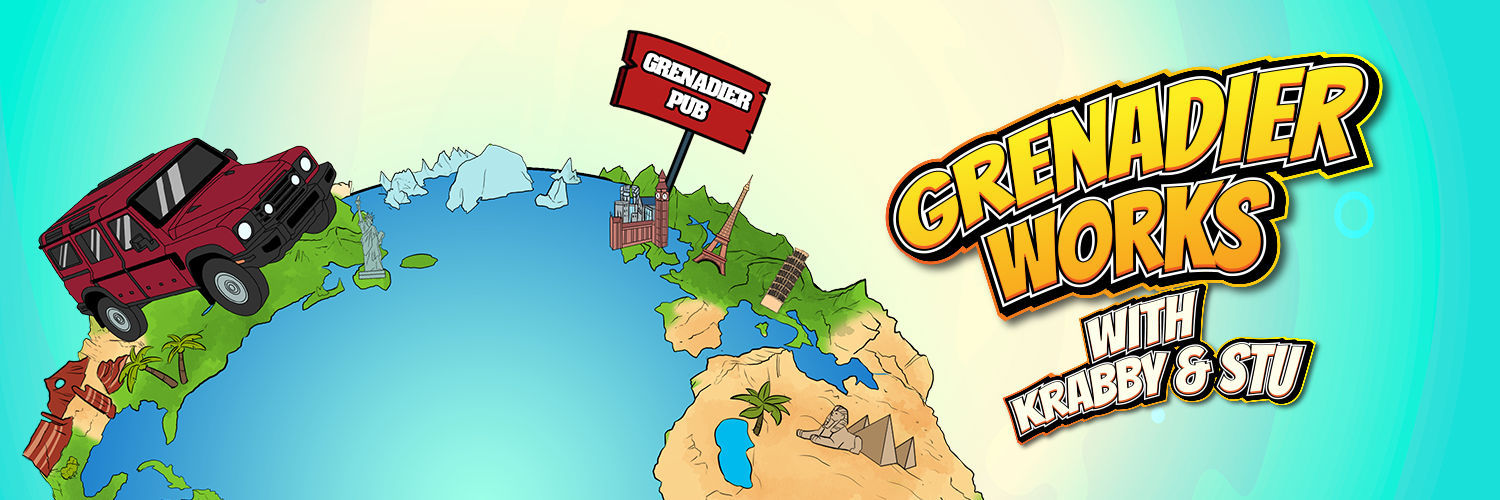I added that to the Links section. Thanks.I did this table for winching, but it shows the variation in force depending on slope and surface.
Grenadier Table.pdf
drive.google.com
The Grenadier Forum
Register a free account today to become a member! Once signed in, you'll be able to contribute to the community by adding your own topics, posts, and connect with other members through your own private inbox! INEOS Agents, Dealers or Commercial vendors please use the contact us link at the bottom of the page.
-
Guest submit your best shot for a chance to win the December Photo Contest. Photo Contest Click Here
You are using an out of date browser. It may not display this or other websites correctly.
You should upgrade or use an alternative browser.
You should upgrade or use an alternative browser.
Ronny Dahl Bought a Quartermaster
- Thread starter Greasemonkey
- Start date
-
- Tags
- new quartermaster video
Good stuffI did this table for winching, but it shows the variation in force depending on gradient and surface.
Grenadier Table.pdf
drive.google.com
"What's that in pounds?"
This is like having to take up an Open University course just to figure out how to rescue someone, I'll just tell them I don't have a rope
This is like having to take up an Open University course just to figure out how to rescue someone, I'll just tell them I don't have a rope
Rightly or wrongly, if the guys stuck don’t have a proper recovery point, I won’t ever snatch someone out just securing a strap randomly. I’ve seen a bullbar get ripped off a 4wd, and a shackle slam into the back of a wagon and lodge into the roof. Not going to be responsible for that.
100%. I once saw a guy trying to recover a stuck pickup truck in a telehandler with a strap around the ICBM, sorry the towball.
‘Kin thing went into orbit
‘Kin thing went into orbit
This is a good discussion about why the Ineos Grenadier/Quartermaster are expensive but WORTH IT if you use just cost of purchase from dealer as argument and plan on doing any offroading with them. Once you kit out a 70 series to have all the things you can get from factory on Ineos you might actually spend MORE...
View: https://youtu.be/hDawQZcwkAM?si=Ts0iyYyH4IXbdoc3
I prefer the bolted on recovery points for light vehicles and road trucks. Most damage or distortion occurrs to the eye of the recovery point due to some change or unexpected movement in the recovery even with bridals, general wear or fatigue from multiple recoveries. Very rarely we see chassis damage from correctly bolted on recovery points. A damaged point welded to the frame requires cutting and welding and depending on the factory design this may not be recommend on some vehicles. Most owners or service departments don't check the integrity of a recovery point until it's too late. We regularly inspect and non destructive test recovery points with a crack testing dye kit, the easiest method, or magnetic particle testing. On machinery and vehicles the replacements are welded on by certified weldors. We do a lot of recoveries and post recovery equipment inspections during wet season.
The other point missed in many recovery videos is there is no mention of inspecting equipment at the time of recovery or derating of rigging in certain recovery scenarios. Most slings and shackles are rated for straight line pulls soon as there is angle or reeving involved the equipment has to be derated. Some rigging combinations will increase the loads on a recovery point beyond the weight of the car or terrain factors.
The other point missed in many recovery videos is there is no mention of inspecting equipment at the time of recovery or derating of rigging in certain recovery scenarios. Most slings and shackles are rated for straight line pulls soon as there is angle or reeving involved the equipment has to be derated. Some rigging combinations will increase the loads on a recovery point beyond the weight of the car or terrain factors.
Excellent point: equipment load ratings are as much a function of what you’re going to be prepared to recover as they are about the needs of your vehicle.Please explain because I am stupid/completely new to proper 4x4. Is the rating per recovery point or both, would using both increase the rating. Are they any lower/higher/same as the ones that get added by aftermarket companies on on things like a Jeep or Prado Landcruiser. How do you decide if something is too heavy, vehicle is under the weight but bogged down.
How do I decide what shackles, straps and ropes to use?
Sorry for all the questions, I had a light weight tow rope from a previous vehicle but when I tried dragging a large Mercedes estate that had got grounded it started to fray so had to leave it to the farmer to go back home for better ropes. I have now got rope and straps that are excess of 12t, if i remember rightly. The soft shackles are less i think.
Regarding Ronnie's "Flaw" video, it is indeed a flaw. I loathe that I cannot fully disengage ESC, and still maintain any semblance of speed. When I first got the Gren and went to Ocotillo Wells, Blowsand Hill bested me. Just could not get up that sand hill. Now, with the lift and bigger tires fitted, it may be possible (will know when dessert season arrives), but I'm skeptical. And with the lift, the damned ESC/ABS kicks in on pavement when going too fast around a bend. It's disconcerting to have the ABS kick in in that circumstance, and feels much more unsafe than the extra sway. Hopefully one day, they'll be enough of these things on the road to get some true aftermarket SW adjustment/tuning.
I saw in the video comments, some were advocating for just pulling the ABS fuse. Anyone try this? I'm wary of popping a code that requires a dealer visit.
I saw in the video comments, some were advocating for just pulling the ABS fuse. Anyone try this? I'm wary of popping a code that requires a dealer visit.
I was attempting to climb a steep wet clay track last year. Front and rear lockers were engaged, in auto, foot to the floor. RPM maxed out yet the vehicle went no higher than 5th gear. My comment in the video was “it just seemed to die in the arse”.
It is almost like some kind of protection mechanism kicks in and retards the engine. The main screen also indicated “ABS and ESC OFF”.
It is almost like some kind of protection mechanism kicks in and retards the engine. The main screen also indicated “ABS and ESC OFF”.
Right, so it seems that “ESC off” isn’t really off, you need at least at one of the diff lockers in to have it off completely?
I guess there may be way to wire in a switch to the ABS module or one side of the fuse to give you the option to turn it off without having to pull the fuse or engage a diff lock? Might be a few errors and Bingbongs of doom.
I guess there may be way to wire in a switch to the ABS module or one side of the fuse to give you the option to turn it off without having to pull the fuse or engage a diff lock? Might be a few errors and Bingbongs of doom.
They could code it that low center turns off ESC.Right, so it seems that “ESC off” isn’t really off, you need at least at one of the diff lockers in to have it off completely?
I guess there may be way to wire in a switch to the ABS module or one side of the fuse to give you the option to turn it off without having to pull the fuse or engage a diff lock? Might be a few errors and Bingbongs of doom.
Why didn't Ronny have the same ESC issue when he had the Station Wagon on the same dunes?
Why was Ronny not using the rear locker when attempting that dune.......
Can you hold down the ESC button for more than 3 seconds I that a "thing" they seem to think it is on face book. Does this tip work????
" drove my Grenadier 30 days through the Sahara Desert. In Sand you have to get in offroad mode AND have ESC button pressed. (3 seconds button press) Offroad mode alone reduces ESC but does not turn it off. That’s the trick and you’ll be fine."
" drove my Grenadier 30 days through the Sahara Desert. In Sand you have to get in offroad mode AND have ESC button pressed. (3 seconds button press) Offroad mode alone reduces ESC but does not turn it off. That’s the trick and you’ll be fine."
Last edited:
When you have the Centre Locked (High or Low) or have the Offroad button activated, the ESC is by default in an ‘Offroad’ setting, and the “ESC Off” indicator is lit.Right, so it seems that “ESC off” isn’t really off, you need at least at one of the diff lockers in to have it off completely?
I guess there may be way to wire in a switch to the ABS module or one side of the fuse to give you the option to turn it off without having to pull the fuse or engage a diff lock? Might be a few errors and Bingbongs of doom.
In order to deactivate the ESC completely, you then need to also press the ESC Off button in the Assistance block on the overhead console. The “ESC Off” indicator will remain lit.
It is a bit confusing: the same ESC Off indicator is lit for when it is reduced (ESC Offroad mode) as well as when it is off completely (ESC Off). At least that’s my understanding.
So to check that your ESC is off you need to confirm that BOTH the ESC Off telltale is showing on the dash, and the ESC Off button is lit on the overhead console.
Just because Ronny says something, doesn’t mean that it’s right.
I’ve had no issues driving on sand with the centre differential locked and a long press of the ESC OFF button.
To me, the wording in the manual suggests that a long press of the ESC OFF button does exactly what it says. As @globalgregors says, the confusion may well come from the unclear distinction between ESC OFFOAD mode and ESC OFF.
Of course just because I say something, doesn’t mean that it’s right either.
I’ve had no issues driving on sand with the centre differential locked and a long press of the ESC OFF button.
To me, the wording in the manual suggests that a long press of the ESC OFF button does exactly what it says. As @globalgregors says, the confusion may well come from the unclear distinction between ESC OFFOAD mode and ESC OFF.
Of course just because I say something, doesn’t mean that it’s right either.
Thanks for that. You learn something every dayWhen you have the Centre Locked (High or Low) or have the Offroad button activated, the ESC is by default in an ‘Offroad’ setting, and the “ESC Off” indicator is lit.
In order to deactivate the ESC completely, you then need to also press the ESC Off button in the Assistance block on the overhead console. The “ESC Off” indicator will remain lit.
It is a bit confusing: the same ESC Off indicator is lit for when it is reduced (ESC Offroad mode) as well as when it is off completely (ESC Off). At least that’s my understanding.
So to check that your ESC is off you need to confirm that BOTH the ESC Off telltale is showing on the dash, and the ESC Off button is lit on the overhead console.
To qoute Ronny’s utube short “ I know Jack shit about this car ’
we should like your response on YouTube to drive attention to public but also Ronny.When you have the Centre Locked (High or Low) or have the Offroad button activated, the ESC is by default in an ‘Offroad’ setting, and the “ESC Off” indicator is lit.
In order to deactivate the ESC completely, you then need to also press the ESC Off button in the Assistance block on the overhead console. The “ESC Off” indicator will remain lit.
It is a bit confusing: the same ESC Off indicator is lit for when it is reduced (ESC Offroad mode) as well as when it is off completely (ESC Off). At least that’s my understanding.
So to check that your ESC is off you need to confirm that BOTH the ESC Off telltale is showing on the dash, and the ESC Off button is lit on the overhead console.
Similar threads
- Replies
- 9
- Views
- 909
- Replies
- 2
- Views
- 249
- Replies
- 5
- Views
- 586
- Replies
- 10
- Views
- 584
- Replies
- 5
- Views
- 671



